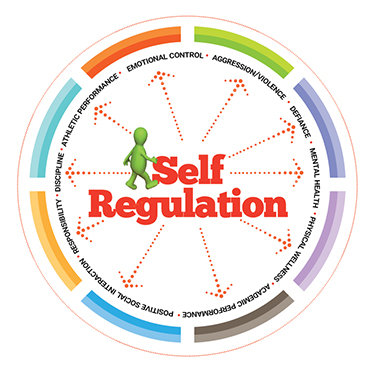Academic Self-Regulation of STEM of Senior High School Students of Divine Word Colleges in Region I, Philippines and Their Academic Performance

Abstract:
The
study wanted to determine the level of academic self-regulation of the STEM students
of Senior High School students of the Divine Word Colleges and its effect toward
academic performance. There were four aspects of self-regulation investigated such
as external regulation, introjected regulation, identified regulation and intrinsic
motivation. Questionnaires were used to gather the data. The quantitative descriptive
research design and explanation research was used in the study. The findings showed
that the academic self-regulation of the STEM students of the senior high school
of Divine Word Colleges is high which means that they have high external regulation,
introjected regulation, identified regulation and moderate intrinsic motivation.
However, the findings also showed that there is no correlation between academic
self-regulation and their academic performance. Their academic performance can be
caused by other factors that are not considered in this study.
Keywords:
Self-regulation, self-determination
theory, academic performance, external regulation, introjected regulation, identified
regulation, intrinsic motivation.
References:
[1]. Ayub,
N. (2017). Effect of Intrinsic and Extrinsic Motivation on Academic Performance.
Retrieved from http://www.academia.edu/2599275/Effect_of_intrinsic_and_extrinsic_motivation_on_academic_performance
[2]. Agustiani, H., Chayad,
S., & Musa, M. (2018). Self-Efficacy and Self-Regulated learning as Predictors
of Students’ Academic Performance. The Open Psychology Journal, Vol, 11, 2018.
[3]. Bandura, A. (1996).
Self-Efficacy: The Exercise of Control. New York: Freeman.
[4]. Bandura, A.
(1986). Social foundations of thought and action. Englewood Cliffs, NJ: Prentice-Hall.
[5]. Bandura, A.
(1989). Human agency in social cognitive theory. American Psychologist, 44, 1175-1184.
[6]. Bandura, A.,
& Wood, R. E. (1986). In personality and social psychology (pp. 211-242). Hillsdale,
NJ: Erlbaum
[7]. Baumeister, R.; Schmeichel, B.; & Vohs, K. (2007).
"Self-Regulation and the Executive Function: The Self as Controlling Agent".
Social psychology: Handbook of basic principles
[8].Behavioral
Research. DOI: 10.1111/j.1751-9861.2008.00031.x. Retrieved from
http://onlinelibrary.wiley.com
[9]. Blair C., & Razza R.P. (2007).
Relating Effortful Control, Executive Function, and False Belief Understanding to
Emerging Math and Literacy Ability in Kindergarten. Child Development, 78(2):647–663. PubMed
[10]. Blair C. 2002. School readiness: Integrating
cognition and emotion in a neurobiological conceptualization of children’s functioning
at school entry. American
Psychologist. 57:111–127. PubMed.
[11]. Bronson, M.
B. (2000). Self-regulation in early childhood: Nature and nurture.
[12]. New York,
NY: Guilford Press
[13]. Casenhiser,
D., Shanker, S. & Stieben, J. (2012). Understanding the Nature of Self-Regulation,
Milton & Ethel Harris Research Initiative, York University, Canada
[14]. Cole P. M, Martin S.E, & Dennis
T.A. 2004. Emotion regulation as a scientific construct: Methodological challenges
and directions for child development research. Child Development. 75(2):317–333. PubMed.
[15]. Cook,
J.L. & Cook, G. 2009). Self-Regulation. New York: Prentice Hall
[16]. Cox,
R. H. (2007). Sport Psychology Concepts
and Applications (6th Edition). New York: McGraw-Hill Companies
Inc.
[17]. Deci,
E.L. & Ryan, R.M. (1999). Intrinsic and Extrinsic Motivations: Classic Definitions
and New Directions. Contemporary Educational Psychology 25, 54–67, doi:10.1006/ceps.1999.1020,
retrieved from http://www.idealibrary.com
[18]. Deci,
E.L. & Ryan, R.M. (1985). Intrinsic
motivation and self-determination in human behavior. New York: Plenum Press.
[19]. Deci,
E. L., & Ryan, R. M. (2000). The ‘what’ and ‘why’ of goal pursuits: Human needs
and the self-determination of behavior. Psychological Inquiry, 11, 227-268.
[20]. Dent,
A.L. (2013). The Relation between Self-Regulation and Academic Achievement: A Meta-Analysis
Exploring Variation in the Way Constructs are Labeled, Defined and Measured. Dissertation.
Duke University. Retrieved from https://dukespace.lib.duke.edu/dspace/handle/10161/7265.
[21]. Eisenberg, N., Fabes R.A., Guthrie
I.K, Murphy, B.C, Maszk, P., & Holmgren R. (1996). The relations of regulation
and emotionality to problem behavior in elementary school children. Development and Psychopathology. 8:141–162.
[22]. Eisenberg,
N., Smith, C.L., Sadovsky A., & Spinrad, T.L. 2004. The Relation of Problem
Behavior Status to Children’s Negative Emotionality, Effortful Control and Impulsivity
and Prediction of Change. Retrieved from https://www.ncbi.nlm.nih.gov/pubmed/?term=Eisenberg%20N%5BAuthor%5D&cauthor=true&cauthor_uid=16938090.
[23]. Grolnick,
W. S., & Farkas, M. (2002). Parenting and the development of children’s self-regulation.
In M. H. Bornstein (Ed.), Handbook of parenting: Volume 5, practical issues in parenting
(2ndedn., pp. 89-110). Mahwah, NJ: Lawrence Erlbaum.
[24]. Journal of Applied Social Psychology. DOI: 10.1111/j.1559-1816.2003.tb01890.x Retrieved
from http://onlinelibrary.wiley.com.
[25]. Kennon,
M. S. (n.d) The Self-Regulation Questionnaires. Retrieved from http://selfdeterminationtheory.org/treatment-motivation-questionnaire/.
[26]. Kitsantas,
A., Winsler, A. & Huie, F. (2008). Self-Regulation and Ability Predictors of
Academic Success during College: A Predictive Validity Study. Journal of Advanced
Academics, 20, 42–68. George Mason University. Journal
of Education Psychology, 1990, Vol. 82, No. 1, 33-40.
[27]. Kochanska, G., Murray, K., & Coy
K.C. 1997. Inhibitory control as a contributor to conscience in childhood: From
toddler to early school age. Child
Development. 68(2):263–277. PubMed.
[28]. Koh,
C., Tan, H.S., Tan, K.C., & Fang, L. (2010). Investigating the Effect of 3D
Simulation Based Learning on the Motivation and Performance of Engineering Students.
Published in in JEE, The Research Journal for Engineering Students. DOI: 10.1002/j.2168-9830.2010.tb01059.x. Retrieved
from http://onlinelibrary.wiley.com.
[29]. Kopp, C.B. (1989). Regulation of distress
and negative emotions: A developmental view. Developmental Psychology. 25(3):343–354.
[30]. Lucieer, S.M., Jonker, L., Visscher,
C., Rikers, R.M, & Themmen, A.P. (2016). Self-Regulated Learning and Academic
Performance in Medical Education. PubLMed: US National Library of Medicine.
[31]. Lundy,
T. (n.d.). Self-Regulation: Integrating Four Essential Perspectives. Canadian self-Regulation
Initiative. Retrieved from http://www.self-regulation.ca/4-dimensions-of-self-regulation.html.
[32]. Markus, H.
& Wurf, E. (1987). The dynamic self-concept: A social psychological perspective.
Annual Review of Psychology, 38, 299-337.
[33]. Markus, H.,
& Nurius, P. (1986). Possible selves. American Psychologist, 41, 954-969.
[34]. Markus, H.,
& Ruvolo, A. (1989). Possible selves: Personalized representations of goals.
In L. A. Pervin (Ed), Goal concepts.
[35]. McLean,
A. (2006). Self-Determination, in Positive Psychology Resources. Retrieved from
http://www.centreforconfidence.co.uk/pp/overview.php?p=c2lkPTExJnRpZD0wJmlkPTE0MA
[36]. McClelland,
M. M. Cameron, C.E. (2011). Self-Regulation and Academic Achievement in Elementary
School Children. PubLMed: US National Library of Medicine.
[37]. Mischel, W., Ebbesen, E.B., &
Zeiss, A.M. 1976. Determinants of selective memory about the self. Journal of Consulting and Clinical
Psychology. 44(1):92–103.PubMed.
[38]. Ormrod, J. E. (2009). Essentials of
Educational Psychology. New York: Pearson Education Inc.,
[39]. Pintrich,
P. R. & De Groot, E. (1990). Motivational and Self-regulated Learning Components
of Classroom Academic Performance.
[40]. Positive
Psychology Resources. (2006). Self-Determination. Retrieved from http://www.centreforconfidence.co.uk/pp/overview.php?p=c2lkPTExJnRpZD0wJmlkPTE0MA
[41]. Psychology.
(n.d). Self-Regulation. Retrieved from https://psychology.iresearchnet.com/social-psychology/self/self-regulation/.
[42]. Reid,
R. (1993). Implementing self-monitoring interventions in the classroom: Lessons
from research. Monograph in Behavior Disorders: Severe Behavior. Mahwah, NJ: Lawrence
Erlbaum Associates, Publishers.
[43]. Ryan,
R. M., Deci, E.L. (2000). Intrinsic and Extrinsic Motivations: Classic Definitions
and New Directions. Contemporary Educational
Psychology, 25, 54-67.
[44]. Schraw, G.,
Crippen, K., & Hartley, K. (2006). Promoting self-regulation in science education:
metacognition as part of a broader perspective on learning. Research in Science
Education, 36, 111-139
[45].
Shonkoff JP, Phillips DA, editors. 2000.
Acquiring Self-Regulation. Washington (DC): National Research Council (US) and Institute
of Medicine (US) Committee on Integrating the Science of Early Childhood Development.
[46]. Siegel, D. (2012). The Developing Mind: How Relationships and the Brain Interact to Shape Who We Are. New York: Guilford Publications.
[47]. Stosny, S. 2011. Self-Regulation. Published at Psychology Today. Retrieved from https://www.psychologytoday.com/blog/anger-in-the-age-entitlement/201110/self-regulation
[48]. Zimmerman,
B. J. (2002). Becoming a self-regulated learner: An overview. Theory into Practice,
41(2), 64-70.

